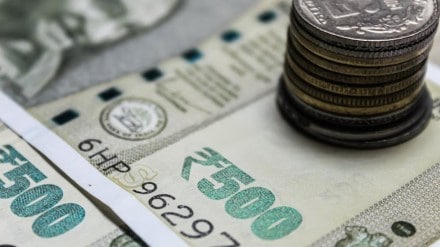The month of January was an exciting one with major economic data released, summarising the state of economic growth of the country. From RBI MPC’s announcement that led to a 25 bps cut in the repo rate, to a low GDP growth during Q2FY25, inflation trajectory, CPI inflation at a five-month low, a widened trade deficit, among other key developments were the highlights of the month. Further, the economy is seeing a lot of movements after the Union Budget 2025, wherein Finance Minister Nirmala Sitharaman announced a slew of measures aimed at increasing consumption. The finance minister, while delivering the Budget speech, had also signalled that the government will continue on the path of fiscal consolidation with fiscal deficit target for FY26 pegged at 4.4 per cent of GDP as against 4.8 per cent in FY25.
Further, on the global front, US President Donald Trump has announced plans to impose reciprocal tariffs on countries charging duties on US imports. The move has raised concerns about a global trade war with India working on a slew of measures including lowering tariffs on a number of products and increasing its imports of US defence and energy goods.
Let us look at the top 5 trending topics in Google in the month of January.
Gross Domestic Product (GDP): Earlier in November, government data showed that India’s economy grew at a slower pace of 5.4 per cent in the July-September quarter of FY25, primarily due to a weaker performance in the manufacturing sector. This was down from 8.1 per cent in the same period last year. On February 7, the Reserve Bank of India’s (RBI) Monetary Policy Committee (MPC) projected the real GDP growth for FY26 at 6.7 per cent, slightly higher than the revised estimate of 6.6 per cent for FY25. RBI Governor Sanjay Malhotra had announced that the GDP growth for Q1FY26 is projected at 6.7 per cent; Q2FY26 at 7.0 per cent; Q3FY26 at 6.5 per cent; and Q4FY26 at 6.5 per cent.
Inflation: Inflation is on a downward trend with retail inflation for January easing to 4.31 per cent from 5.22 per cent in December. Further, wholesale price index (WPI)-based inflation declined to 2.31 per cent (provisional) in January, 2025, primarily due to increase in prices of manufacture of food products, food articles, other manufacturing, non-food articles and manufacture of textiles etc. The consumer food price index (CFPI) went down by 2.9 per cent in January.
Consumer Price Index (CPI): The retail inflation, based on the Consumer Price Index (CPI) stood at 4.31 per cent in January, down from 5.22 per cent in December. This was a big relief after CPI inflation had surged to a 4-month high of 6.21 per cent in the month of October 2024. October inflation was driven by a sharp rise in food prices. On February 7, the Reserve Bank of India’s (RBI) Monetary Policy Committee (MPC) retained CPI forecast for FY25 at 4.8 per cent with Q4 at 4.4 per cent. For the next financial year, FY26, the inflation is projected at 4.2 per cent.
Reserve Bank of India (RBI): RBI Governor Sanjay Malhotra concluded his first MPC meeting on February 7 and announced a cut in the repo rate for the first time in 5 years. The MPC announced a 25 bps cut in key interest rates to 6.25 per cent from 6.50 per cent. The central bank maintained its ‘Neutral’ stance. While the FY26 GDP target was set at 6.70 per cent, the FY26 inflation was projected at 4.2 per cent, considering global uncertainties.
Trade: India’s merchandise trade deficit in January stood at $22.99 billion, per a Reuters calculation based on export and import data released by the government. The widening trade deficit due to sluggish momentum in exports was attributed to the normalisation in gold imports at $2.7 billion. Further, the heightened uncertainty globally due to the US President’s announcement on reciprocal tariffs will be a key factor going forward.
